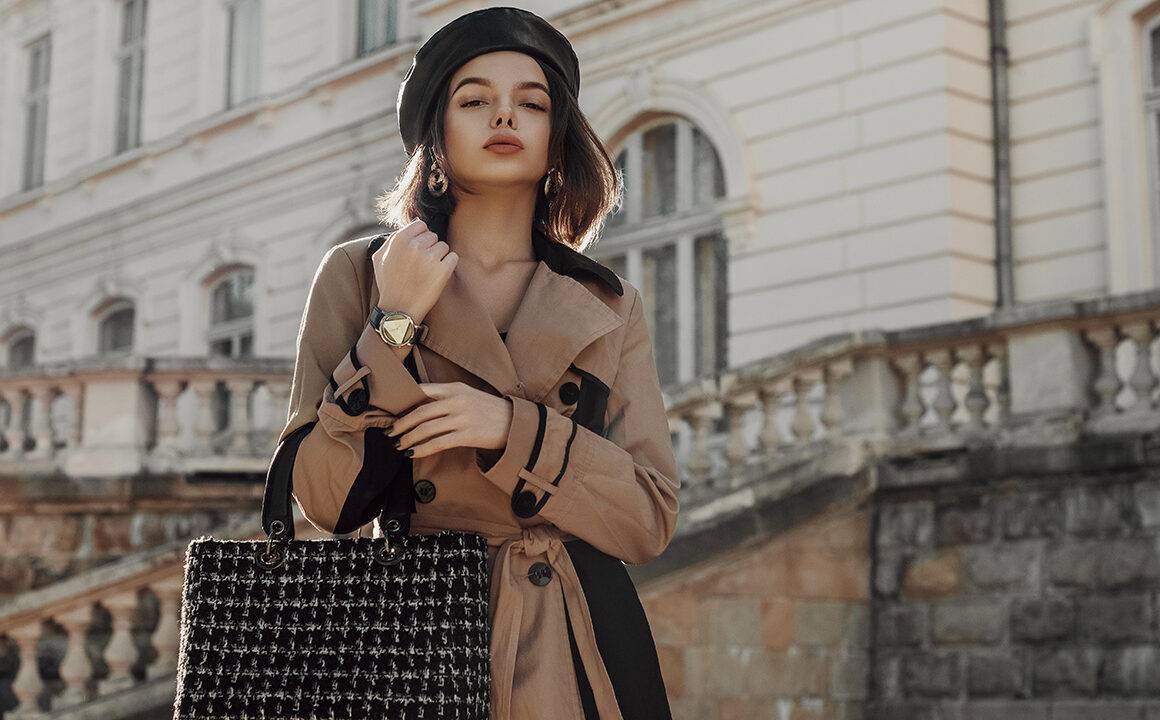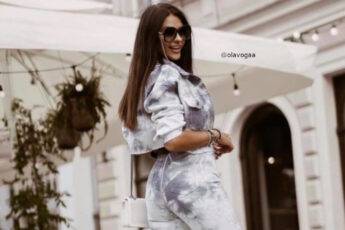The Anatomy of a Trench Coat and How To Wear It

You know that no matter what, you can always find a classic pair of pumps and a basic pair of blue jeans in your wardrobe at any time. And a little black dress will surely be there, too. In the same way, the classic trench coat is the permanent resident of your wardrobe and the ideal staple to wear around town during autumn and winter. So, for any authentic fashionista, investing in a classic beige or khaki trench coat is somewhat a mandatory requirement. Let us explore the anatomy of a trench coat and learn how to find the perfect trench coat for your own body shape, complexion and personality.
The History of a Trench Coat
It is worth tracing back to the early times and delving into the history of Great Britain only to find out that the origin of trench coats goes beyond any fashion-pursuing ambitions. Trench coats circulating so vigorously these days as a piece of stylist outfit and a powerful weapon for resisting rain drops were once withstanding mud and blood during World War I back in 1914. Before the British fashion house Burberry launched the first trench coats (buy Burberry trenches here!), the British soldiers and officers were fighting against the enemy troops wearing heavy and soaking greatcoats that were restricting their movements, at times growing heavier twofold when soaked in water or mud.
When Tom Burberry, the founder of the eponymous brand gave birth to a unique water-resistant tightly woven fabric called gabardine, the trench coat took the shape. The name Tielocken given by Tom Burberry was soon substituted for Trench Coat, when the British troops started to use them in the trenches. The lightweight fabric of the trench coats and their ankle length hemlines were very effective warrants for easy movements while the beige and khaki shades were making the officers homogenous with the land or the artillery smoke. The parade of trench coats continued during the World War II as well.
After the World War II contrary to all the expectations that trench coats would be out of circulation, they started to be zealously used by a lot of travellers and investigators up to becoming the cult-favorite piece of clothing for femme fatales. The glamorous Hollywood became a terrain of voguish trench coats. Many gangster films were rendering classic trench coats thus making this post-war piece of clothing a symbol of self-confidence and smartness, while Audrey Hepburn donning a beige trench coat in the film “Breakfast at Tiffany’s’ laid the foundation for feminine trench coats to appear in different styles and colors under the tutelage of cult-classic Burberry.
The Anatomy of a Trench Coat
The trench coat originally meant for military activities was tailored and designed in a way as to bring ultra-comfort and functionality to the British troops. That is why each piece of design on the contemporary trench coat has its particular targeted function rather than just being a designer solution. The anatomy of a trench coat is pretty intricate and just like the human anatomy each of its organs has its specific function.
Double Breast: A typical trench coat comes to be double breasted though nowadays single-breasted ones may also come into view. Additionally, it features ten buttons on the front. Originally double-breasted trench coats were the uniforms of British sailors as a protective method from wind aboard regardless of the fact from which direction the wind was blowing. This concept was later on adopted by the British military.
Collar: As a rule, a trench coat also has a collar that can be raised and fastened with hook and eye at the neck serving as a scarf in the windy weather. During the war years these collars were not only for protecting one from the bad weather but also from the poison gas. Gas masks were being camouflaged under the collar so as to become airtight.
Lining: The removable lining used both in the past and nowadays is for giving the body extra warmth and making the trench coat work both in the frigid and cool weather. In the past, this part of trench coat was also used as emergency bedding.
Pockets: Nowadays the roomy pockets of trench coats seem to be just a part of design. But things were not like this back in 1914. The large and deep pockets were used for hiding maps, binoculars and other essentials. Over and above, the pockets of this super practical outerwear are open both from inside and outside. So while raining the outside pockets can be closed.
Belt: A typical trench coat presents a belt at the waist that can be hooked up tightly in bad weather and be undone when you just yearn for showing off your mini skirt and athletic legs.
Epaulettes: The straps at the shoulders called epaulettes were first of all indicating the rank of the trench coat wearer. Apart from that many officers and soldiers were using them to anchor some maps or gloves through.
D Rings: D rings attached at the waist next to the belt were again for carrying some necessary items like grenades or swords.
Storm Shield: The cape-like extra fabric at the back of the trench coat is used for ventilation.
Sleeve Loops: Sleeve loops are for tightening the sleeves at the bottom so as the raindrops do not penetrate inside.
Storm Patch or Gun Flap: This extra fabric on the right breast was performing the whole two functions: preventing the water from making an entrance and for carrying the rifle.

How to Choose The Perfect Trench Coat
After the World War II when women devouringly took possession of trench coats, our favorite fashion house Burberry and a range of other brands started doing a bang-up job by a wee bit deviating from the standard trench coat designs and colors and catering us to myriads of fresh new styles and shades. The variety of trench coats mainly lies beneath their lengths, some innovative strokes on the lapels and at the hems, as well as the shades. That is why nowadays every single woman can easily find her ideal trench coat that will match both her body shape and complexion. First of all let us see in what designs the trench coats routinely come to be and what tips you should follow while opting for your perfect one.
Short Trench Coat: The length of these coats reaches a little bit above the hips and is advisable for women with short stature since the short trenches make them visually tall and just on the contrary tall women should shy away from wearing short trench coats to whatever extent is possible. However, if you are of short height with broad hips, avoid wearing short trench coats as well, otherwise visually you will look curvier.
Medium Length Trench Coat: It comes to be the classic variant of trench coats and this was the very trench coat length that was used for attiring the British forces during the war years. This length befits almost every body shape and height, coming to be the ideal variant for short and curvy women. Tall women can also choose medium length trench coats combined with anything trendy and body hugging.
Long Trench Coat: It goes without saying that long trenches are in no way for short women. However, if you aspire wearing a long trench while being a petite girl, it is strongly recommended to choose the length a little bit below the knee and of course, to wear high heels so as to professionally mask your short stature. As for tall women, long trenches will definitely give them grandeur and royalty.
Trench Coat with Wide Lapels: This type of trench coat can work perfectly for petite girls if they want to somehow hide their slim complexion, while plus size women should undeniably stay away from this design.
Trench Coat with Flaring Hems and Medium Length: This is a style excellent for ladies with hourglass figure and long athletic legs.
Denim and Leather Trench Coat: Such trendy pieces are often seen with length below or above the knee and are suitable for every lady depending on her individual preferences.
So as to create a stunning trench-coat-themed look the right design is not yet sufficient. You should also have flair for selecting a trench coat, the shade of which will ideally go with your skin tone. So take into consideration that if you are a dark haired mulatto girl choosing shades close to your natural tone is just contraindicated; so give navy blue, black, brown and grey trench coats a wide berth in lieu of taking notice of warm-colored or vibrant ones, such as lemon yellow, ruby red or orange-red.
Fair skinned blondes will look just scene-stealing donning trench coats of all jewel colors and pastel shades. White color may flatter the natural tone of a chocolate-skinned girl while making light-skinned ladies look pale and sick. The original beige and khaki trench coats may definitely match any complexion when performing some plus-minus operations on the entire look.
Flip the page to read how to wear a trench coat appropriately.





Leave a Comment